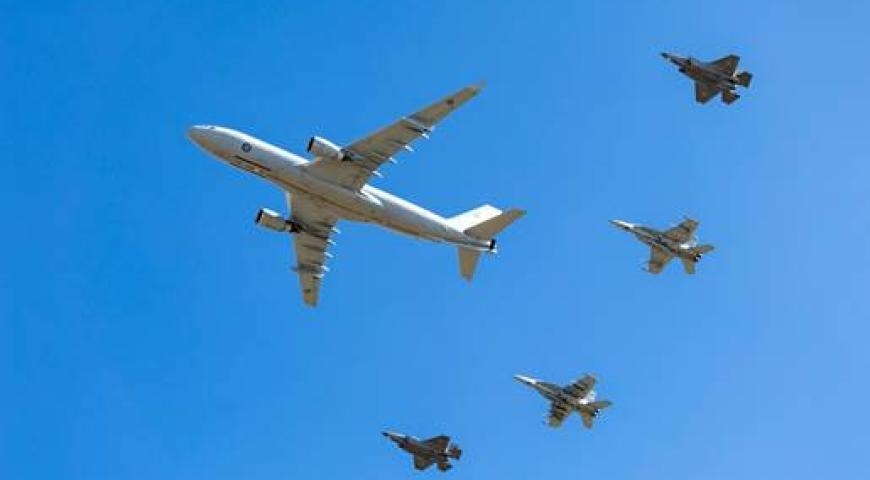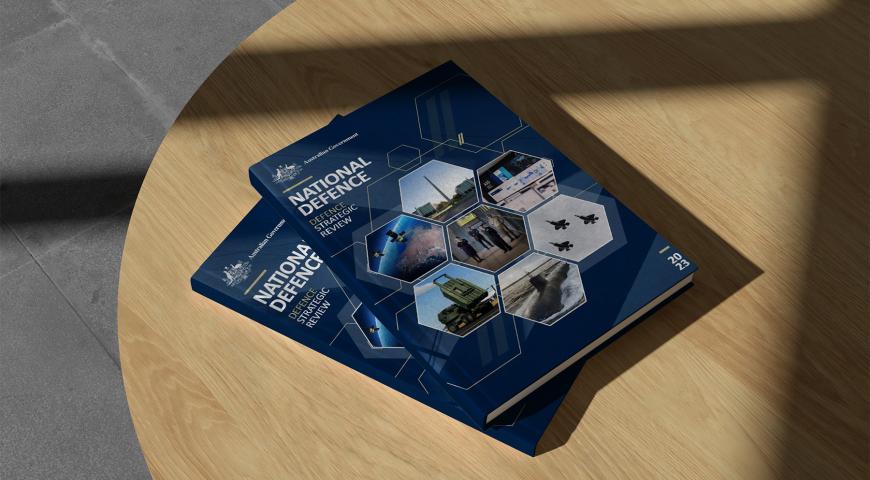Adapting Anti-Access/Area Denial (A2/AD) Concepts for Australia
Introduction
The 2023 Defence Strategic Review (DSR) recommended that Australia adopt a ‘strategy of denial’ that must focus on developing anti-access/area denial (A2/AD) capabilities. Subsequently, the strategy of denial was captured as the cornerstone of the 2024 National Defence Strategy (NDS). The DSR defined a strategy of denial as ‘a defensive approach designed to stop an adversary from succeeding in its goal to coerce states through force, or the threatened use of force, to achieve dominance. Denial is associated with the ability and intent to defend against, and defeat, an act of aggression.’[1] A2/AD capabilities are an inherent part of a strategy of denial, and much has been written about the types of capabilities needed. Although many papers describe what capabilities are required, information on how they interact to deliver a strategy of denial is limited. This paper aims to answer the question, ‘How should Australia incorporate A2/AD concepts into a strategy of denial?’
A2/AD is a contested terminology with varying definitions throughout the literature. The United States Joint Publication 3-0: Joint Operations contains a commonly accepted understanding of the terms. Joint Operations defines anti-access as ‘action, activity, or capability, usually long-range, designed to prevent an advancing enemy force from entering an operational area’.[2] It defines area denial as ‘action, activity, or capability, usually short-range, designed to limit an enemy force’s freedom of action within an operational area’.[3] A2/AD was initially introduced as a concept to describe how the US saw its adversaries seeking to constrain its activities. Some commentators subsequently found it useful to describe the activities the US and its allies should also undertake to constrain their adversaries. However, problems with A2/AD language and historical biases around its use have inhibited debate around the concepts.
This paper will argue that Australia should adopt ‘Contested Access and Manoeuvre’ (CAM) as a concept that better facilitates the needs of a denial strategy. CAM involves conducting and opposing interdependent ‘counter manoeuvre’ and ‘counter access’ activities with increasing intensity commensurate to the threat level. The paper will argue that this language and conceptual approach provide more utility for exploring A2/AD concepts and their application to Australia’s contemporary circumstances.
Part 1 will begin by exploring the context within which Australian strategic documents reference A2/AD capabilities and will then review existing literature related to A2/AD. Based on the literature review, the paper will propose ‘Contested Access and Manoeuvre’ as a new lexicon that better supports the concepts. Next, Part 2 will use the Australian Defence Force warfighting functions as a framework to analyse CAM concepts within a strategy of denial. Finally, Part 3 will analyse CAM concepts within the Australian context. Providing new terminology will reduce ambiguity and facilitate more productive debate around CAM concepts and contributions to Australia’s strategy. The concept presented in this paper will provide a conceptual basis for the apportionment and integration of CAM capabilities into the strategy of denial. This will improve ADF force design outcomes to deliver the NDS.
Caveat: This paper is unclassified; all commentary is based solely on unclassified sources. It acknowledges the prevalence of classified material, especially those related to system capabilities. While classified sources may provide different details to some examples cited herein, they will not impact the conceptual nature of the paper.
Context
The DSR is noteworthy as the first formal Australian policy document to mention A2/AD.[4] Although the NDS did not explicitly reference A2/AD further, it adopted the strategy of denial and prioritised ‘deterrence through denial’ over shaping and responding. It outlined capability investment priorities in areas such as long-range strike and air and missile defence.[5] Finally, it outlined the need for strategic reform to ensure that Defence is structured with the right mix of capabilities and workforce to deliver against the strategy of denial.[6] The ADF Concept Framework supports the NDS. The ADF Capstone Concept APEX describes how Australia seeks to maximise its power through integration and apply it to deterrence.[7] Concept ASPIRE focuses more specifically on theatre settings in which Australia may operate and outlines three principles of employment for Australia to overcome its size limitations. ‘Focus’ describes force design and application priorities. ‘Asymmetry’ describes how Australia pits its strengths against an adversary’s weakness to deter threat action by applying ‘cost imposition’.[8] Existing literature rarely uses the term ‘A2/AD’ to describe these capabilities in the Australian context. Instead, the relationship with A2/AD must be inferred from terms such as ‘strike’ or ‘Integrated Air and Missile Defence (IAMD)’.
Literature regarding A2/AD falls into three overlapping themes. The first theme argues the need to develop A2/AD capabilities as part of a defence strategy. The second, most abundant theme, describes adversary A2/AD capabilities and how Australia or its allies should work inside these areas. This is relevant to this paper as it helps analyse other A2/AD systems to apply lessons applicable to Australia’s development of similar capabilities. The final theme describes how A2/AD capabilities should be structured. Literature in this area commonly references other concepts, such as IAMD or long-range strike, that can be incorporated into a broader A2/AD concept.
Before the DSR, Australian literature rarely explicitly mentioned the idea of Australia developing its own A2/AD capabilities.[9] Such commentary came primarily from think tank analysts such as Dr Malcolm Davis at the Australian Strategic Policy Institute (ASPI). Davis observed that debates surrounding long-range strike options for Australia implied building an A2/AD capability.[10] He further developed the idea by arguing for Australia to adopt a strategy of ‘forward defence in depth’.[11] The concept of defence in depth implies more than long-range strike, such as air defence capabilities. This was the basis of the defence strategy in the 1987 Defence White Paper.[12] The difference between 1987 and today is that long-range weapons have eroded the protection afforded by Australia’s air-sea gap. This necessitates an ability to operate forward from Australia into archipelagic regions of Southeast Asia.[13] Although this idea is not explicitly linked to A2/AD, it has been captured in the DSR and NDS with the concept of ‘impactful projection’.[14] Analysts have highlighted the utility of A2/AD capabilities in the maritime domain for a nation strategically weaker than its potential opponents.[15] This observation is helpful for Australia’s strategy as a middle power in the Indo-Pacific region.[16] A2/AD has rarely been discussed as something Western militaries should pursue but rather as something they must work around.
Literature regarding A2/AD capabilities usually presents the perspective of military forces that may need to operate inside an adversary’s A2/AD coverage. This highlights force protection needs such as dispersal and adaptable command and control architectures.[17] This is relevant as force projection to conduct A2/AD operations may need to occur inside an adversary’s A2/AD zone. These articles also raise valuable discussions around the balance required for conducting offensive operations as part of deterrence against the risk of escalation.[18] Literature in this area highlights some of the challenges associated with current discussions around A2/AD. Anti-access warfare is distinct from area denial, but the shorthand form of A2/AD often inadvertently conflates the two concepts. Misinterpretation of the terms frequently sees them represented as ‘no-go’ areas on maps rather than as areas requiring additional consideration to operate within.[19] Discussions focus on capabilities and tactics rather than the overall strategy.[20] Understanding threat A2/AD capabilities and how they may be negotiated is helpful when considering the development of similar capabilities. However, this must be overlaid with an understanding of the need that A2/AD capabilities are addressing as a contribution to the overarching defence strategy.
Literature discussing how A2/AD capabilities should be constructed focuses primarily on the capabilities needed for A2/AD operations. These include the sensors necessary to inform the targeting enterprise, land or maritime strike and counter-air capabilities.[21] A2/AD concepts for cyber and social domains exist but are found in isolated documents instead of integrated into broader A2/AD strategies.[22] More helpful documents often relate to separate concepts that are a subset of or can be adapted to A2/AD. Manoeuvre warfare theory addresses defeat mechanisms and proposes systemic disruption as an alternative approach to attrition warfare. This concept views an adversary as an interacting system of systems and proposes targeting nodes or connections to disrupt its coherent functioning.[23] This provides an asymmetric effect consistent with Australia's approach to employing military power.[24] Although IAMD appears narrowly focused, the current concept takes a broad approach consistent with systemic disruption that readily applies to A2/AD operations. It considers five layers: counter proliferation, deterrence, counterforce, active defence, and passive defence.[25] These aggregate to deliver an overall effect and have been validated by observations of the current conflict in Ukraine.[26]
Although the DSR clearly articulated the need for Australia to develop A2/AD capabilities, the concept has yet to be clearly defined. When A2/AD is discussed in other contexts, its component terms are often conflated and misinterpreted. The NDS and other literature comprehensively describe capabilities that contribute to A2/AD. However, the relationship to A2/AD must be inferred. The current literature consistently lacks information on the apportionment and integration of A2/AD capabilities into the defence strategy. This paper aims to provide a conceptual basis for incorporating A2/AD capabilities into Australia’s strategy of denial.
Contested Access and Manoeuvre: Improved Language for A2/AD
The literature review revealed consistent challenges regarding A2/AD language. Admiral John Richardson took a strong stance in 2016 as the US Chief of Naval Operations, stating, ‘The Navy will avoid using the term A2AD as a stand-alone acronym that can mean many things to different people or almost anything to anyone.’[27] Richardson raised concerns that the language was imprecise and ambiguous. The term ‘denial’ implied certainty rather than aspiration. He also viewed it as being overly oriented towards defensive operations, which missed the nuance of working inside such areas.[28] Complicating matters is a historical bias that now applies to A2/AD. Authors such as Doctor Sam Tangredi describe A2/AD as a strategy inferior nations employ to reduce the influence of stronger powers than themselves.[29] Such discussions have created the conditions for Western strategists to restrict their thinking to countering A2/AD rather than considering how they might employ it themselves. The literature indicates that A2/AD concepts are valuable and worthy of debate, but the terminology complicates the ability to hold such conversations. Therefore, more clearly defined terminology is necessary to get the most out of the concepts. Chris Dougherty highlighted the benefits of the terms ‘contesting theatre access and manoeuver’ to make clear that access and manoeuvre are contested rather than denied.[30] However, adding ‘theatre’ unnecessarily narrows the scope. The same is true of the current definitions of A2 and AD referencing long or short ranges.
This paper proposes ‘contested access and manoeuvre’ to describe the overall concept, consisting of interdependent ‘counter-access’ and ‘counter-manoeuvre’ activities. This language provides utility for exploring the concept from offensive and defensive perspectives. Counter-access comprises ‘measures intended to prevent access to an area’. Counter-manoeuvre encompasses ‘measures intended to limit an enemy’s freedom of manoeuvre’. This paper defines manoeuvre as ‘relational movement to gain a position of advantage’.[31] Using ‘manoeuvre’ instead of ‘action’ provides more nuance to the nature of military operations involved than current definitions of A2 or AD. Viewing counter-manoeuvre and counter-access as separate activities within a broader concept of contested access and manoeuvre offers a robust basis for reviewing the concepts. Importantly, the word ‘contested’ in the broad concept highlights that both sides conduct counter-access and counter-manoeuvre activities in a contested environment.
Next, in Part 2, the ADF warfighting functions will be used to frame the exploration of these concepts.
1 Angus Houston and Stephen Smith, National Defence: Defence Strategic Review: 2023 (Canberra: Department of Defence, 2023), 49.
2 Joint Chiefs of Staff, Joint Publication 3-0 Joint Operations Change 1 (United States Department of Defense, 2018), GL-6.
3 Joint Chiefs of Staff, GL-6.
4 Houston and Smith, National Defence, 49.
5 Australian Government, National Defence Strategy (Department of Defence, 2024), 22–25, 37–41; Australian Government, Integrated Investment Program (Department of Defence, 2024), 6–12.
6 Australian Government, National Defence Strategy, 71.
7 VCDF Group - Military Strategic Plans, APEX, Integrated Campaigning for Deterrence, 2nd ed. (Joint Concepts, 2024).
8 Joint Warfare Development Branch, ASPIRE, Australian Defence Force Theatre Concept, 2nd ed. (Joint Concepts, 2023).
9 Air Commodore Richard Keir, “The Rise of China and the US Response: Time for Australia to Think about Anti-Access and Area-Denial Warfare,” Indo-Pacific Strategic Papers, May 2016, 2.
10 Malcolm Davis, “An Anti-Access/Area-Denial Capability for Australia?,” The Strategist, November 25, 2019,https://www.aspistrategist.org.au/an-anti-access-area-denial-capability-for-australia/.
11 Malcolm Davis, “Forward Defence in Depth for Australia,” Strategic Insights (Australian Strategic Policy Institute, 2019),https://www.jstor.org/stable/resrep23031.
12 Department of Defence, The Defence of Australia 1987 (Canberra: Australian Government Publishing Service, 1987), 31.
13 Michael Pezzullo, “The Long Arc of Australian Defence Strategy,” The Strategist, May 10, 2024,https://www.aspistrategist.org.au/the-long-arc-of-australian-defence-strategy/.
14 Australian Government, National Defence Strategy; Houston and Smith, National Defence.
15 Sam J. Tangredi, “Antiaccess Warfare as Strategy: From Campaign Analyses to Assessment of Extrinsic Events,” Naval War College Review 71, no. 1 (2018): 31–36.
16 Timothy J. Blizzard, “The PLA, A2/AD and the ADF: Lessons for Future Maritime Strategy,” Security Challenges 12, no. 3 (2016): 61–82.
17 Russell S. Badowski, “Airpower Projection in the Antiaccess/Area-Denial Environment: Dispersed Operations and Base Defense,” Defending Air Bases in an Age of Insurgency: Volume II (Air University Press, 2019), 273–78,https://www.jstor.org/stable/resrep19551.15.
18 David W. Kearn, “Air-Sea Battle and China’s Anti-Access and Area Denial Challenge,” Orbis 58, no. 1 (December 2014): 144–45,https://doi.org/10.1016/j.orbis.2013.11.006.
19 Douglas Barrie, “Anti-Access/Area Denial: Bursting the ‘No-Go’ Bubble?,” IISS, March 29, 2019,https://www.iiss.org/en/online-analysis/military-balance/2019/04/anti-access-area-denial-russia-and-crimea/.
20 Tangredi, “Antiaccess Warfare as Strategy.”
21 Stephen W. Miller, “Multi-layered Shield: Anti-Access Area Denial (A2AD) Has Taken on Significant Importance as Military Minds Reset to Peer-to-Peer Conflict from Two Decades of Asymmetric Warfare.,” Armada International, no. 5 (October 1, 2019): 28–31.
22 Alison Lawlor Russell, “Strategic Anti-Access/Area Denial in Cyberspace,” in 2015 7th International Conference on Cyber Conflict: Architectures in Cyberspace (2015 7th International Conference on Cyber Conflict: Architectures in Cyberspace (CyCon), Tallinn, Estonia: IEEE, 2015), 153–68,https://doi.org/10.1109/CYCON.2015.7158475; Phil Zeman, “Social Antiaccess / Area-Denial (Social A2 / AD),” Journal of Advanced Military Studies 12, no. 1 (May 28, 2021): 149–64,https://doi.org/10.21140/mcuj.20211201007.
23 Marinus, “On Defeat Mechanisms - Maneuverist Paper No. 10,” Marine Corps Gazette, The Maneuverist Papers, July 2021,https://www.mca-marines.org/wp-content/uploads/On-Defeat-Mechanisms.pdf.
24 Doctrine Directorate, ADF-P-3 Campaigns and Operations, 3rd ed. (Doctrine Directorate, 2023), 60–61; Joint Warfare Development Branch, ADF Concept ASPIRE.
25 SQNLDR Robert Vine, “Missile Defence: More Than Hitting a Bullet with a Bullet - Robert Vine,” Williams Foundation, October 11, 2020,https://www.williamsfoundation.org.au/post/missile-defence-more-than-hitting-a-bullet-with-a-bullet-robert-vine.
26 Todd A. Schmidt, “The Russia-Ukraine Conflict Laboratory: Observations Informing IAMD.,” Military Review 104 (March 2, 2024): 22–31.
27 John Richardson, “Chief of Naval Operations Adm. John Richardson: Deconstructing A2AD,” The National Interest (The Center for the National Interest, October 3, 2016),https://nationalinterest.org/feature/chief-naval-operations-adm-john-richardson-deconstructing-17918.
28 Richardson.
29 Sam J. Tangredi, “Anti-Access Strategies in the Pacific: The United States and China,” The US Army War College Quarterly: Parameters 49, no. 1 (March 1, 2019),https://doi.org/10.55540/0031-1723.2859; Tangredi, “Antiaccess Warfare as Strategy.”
30 Chris Dougherty, “Moving Beyond A2/AD,” December 3, 2020,https://www.cnas.org/publications/commentary/moving-beyond-a2-ad.
31 Marinus, “Marine Corps Maneuver Warfare - The Historical Context,” Marine Corps Gazette, The Maneuverist Papers, September 2020, 87–89,https://www.mca-marines.org/wp-content/uploads/Marine-Corps-Maneuver-Warfare-1.pdf; United States Marine Corps, Warfighting, Marine Corps Doctrinal Publication (MCDP) 1 (Washington, DC: USMC, 1997), 72; Doctrine Directorate, ADF-P-3 Campaigns and Operations, 111.
Defence Mastery
Contested Access and Manoeuvre - Part 1 © 2025 by . This work is licensed under CC BY-NC-ND![]()
![]()
![]()
![]()
Please let us know if you have discovered an issue with the content on this page.
Comments
Start the conversation by sharing your thoughts! Please login to comment. If you don't yet have an account registration is quick and easy.




